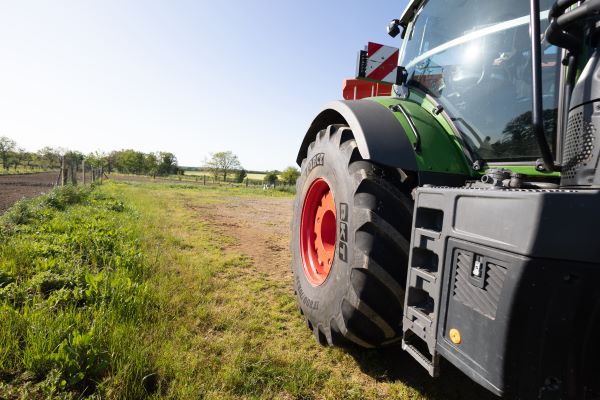Historically speaking, there are many factors that have had an influence on the agricultural sector: first and foremost, climate instability, geopolitical crises falling on the agri-food market and consequently affecting everything that revolves around production and agribusiness. A combination of elements that result in difficult predictability and a high business venture risk.
Mapping out trends in agriculture is, hence, exceptionally challenging. Yet BKT, the world’s leading Off-Highway tire manufacturer for several industries with particular focus on agriculture, has always been attentive to such topics. Aided by previous years’ historical data, the company has carefully analyzed industry trends with a view to providing a decalogue of the macro trends that will define agriculture in 2024.
#1 – increase in conservation tillage
Supported by EU policies, minimum tillage and no-till seeding will experience a marked acceleration during the year just begun. Regenerative agriculture prioritizes minimal soil disturbance while emphasizing increased soil biodiversity and topsoil regeneration. This approach encompasses various techniques, such as no-till farming, reduced tillage, crop rotation, and many others.
#2 – rising prices of some field crops
Despite the highly volatile market prices, it is possible to assume an upcoming European-wide price increase in some crops: the most likely ones are corn, barley, wheat, and soybeans. This upward price trend would be largely linked to the procrastination of ongoing geopolitical conflicts in combination with a possible contraction of overseas production.
#3 – spread of cover crops
The so-called cover crops are typically used to increase soil fertility and counter the cost of chemical fertilization practices. Also growing will be the possible income from silage crops, particularly from alfalfa production.
#4 – go-ahead for glyphosate use until December 2034
Maintaining the conventional weed management method, however, will not impact alternative and organic production, which is still growing steadily and sharply.
#5 – more extensive use of precision farming technologies
A more widespread use of digitized solutions in agriculture is expected, especially those at the entry-level, which are easy-to-implement and affordable, for the purpose of enabling farmers to define precise amounts of water, pesticides, and fertilizers, optimizing yield quality and productivity.
#6 – decrease in traditional tillage
To the benefit of minimum tillage for a year that is still forecast to have low rainfall.
#7 – growth of Variable Rate Technology in precision farming
VRT enables the application of water, nutrients, and other inputs at variable rates in a field. Thus, there is no longer the need to make multiple passes in an area, or to constantly change rate settings on machinery.
#8 – the used farm tractor market remains strong
This trend gains ground on the stand-by procrastination in the introduction of the farm equipment overhaul, while the demand for new tractors is shrinking after the booming sales recorded in the past few years.
#9 – slight growth in the IoT device market
Equipped with multiple sensors that can collect and transmit data in real time in order to handle such diverse tasks as monitoring soil temperature, moisture, livestock, and plants. IoT also simplifies remote farm monitoring, thus reducing costs and enabling more accurate interventions.
#10 – energy transition
We will see a decisive growth of the mutation offering in the drives of machine components and agricultural equipment in general: hydraulic and mechanical controls will be joined, or even replaced, by fully electric solutions.
So, it will be a year full of unknowns, then, but it will keep pace with developments related to new technologies, which will have a more and more significant impact on agriculture and environmental sustainability. It is actually the theme of sustainability that will maintain its central role, along with elements such as identity, territory, innovation and development – values on which, by the way, also BKT bases its roots.









